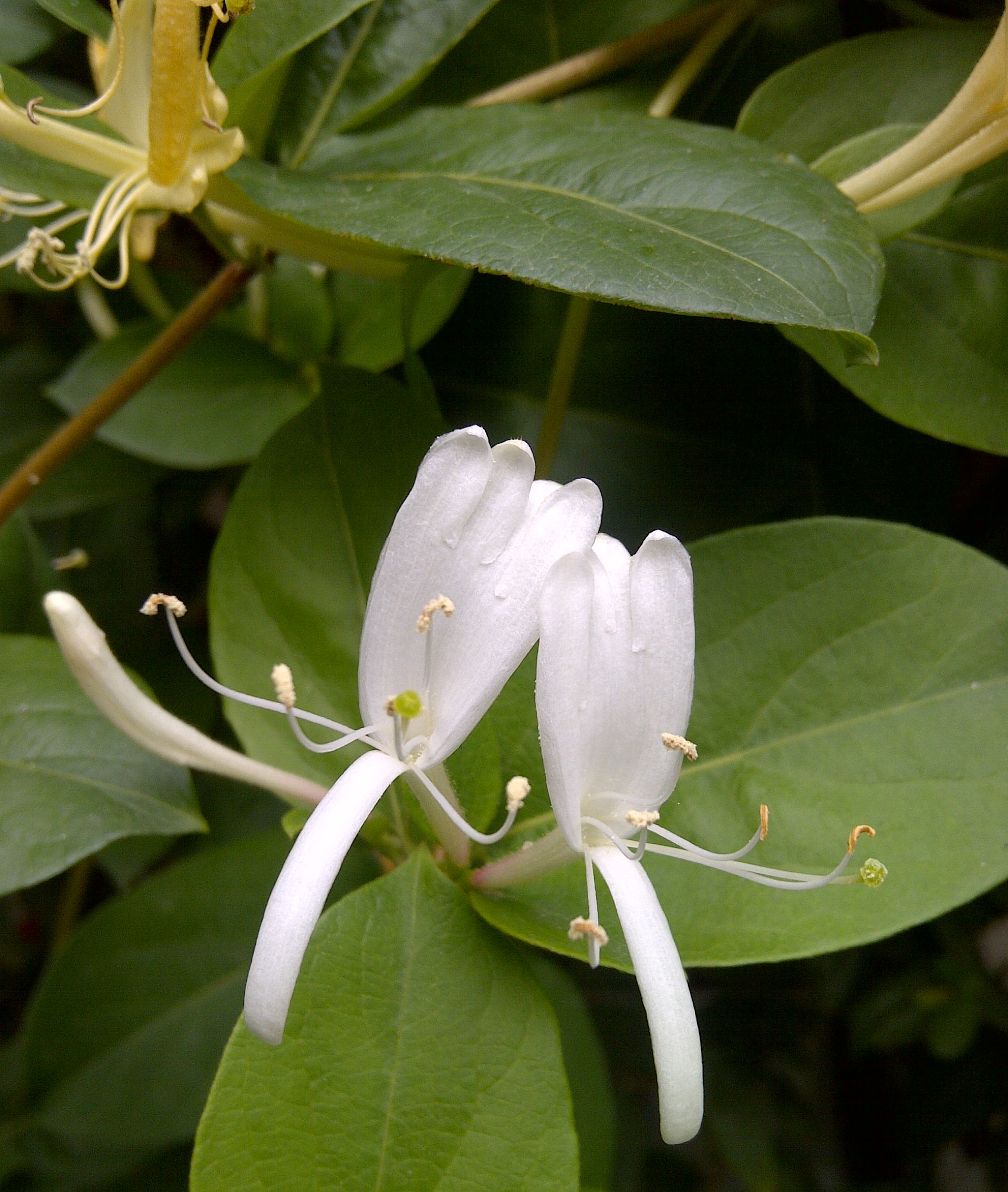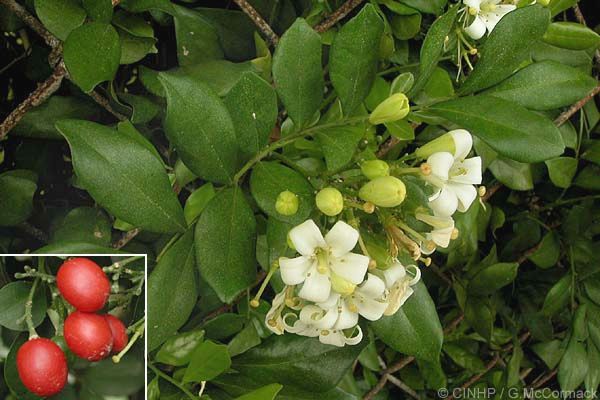I passed again this morning the beautiful tiny shrub of white and ivory colored flowers, slightly tucked away behind the front gate of my apartment building. They reminded me to honeysuckle flowers I once saw at the backyard of C.S. in Texas. I had thought they were a variety of
Murayya Paniculata, or in local language it is called
kemuning.
I have always loved their lingering fragrance; one can smell it from a few feet away. Although, the ones climbing up the front gate's wall was slightly more tubular in petals with stamens jutting out like tusks. So I had to answer my curiosity, and after checking later on, I found I was wrong. To my surprise, it was indeed, a honeysuckle shrub! I had thought honeysuckles could only grow in the Americas. This certainly brings back a fond memory. I had seen C.S. made organic soap from the extracts of honeysuckle flowers, and how the beautiful scent of the bushes at their backyard dangerously lured me in and almost gotten me in trouble not knowing it was side by side with vines of poison ivy. That was the first time I got to know honeysuckle.
 |
| Honeysuckle plant. Beautiful slender, elongated petals. |
 |
| A peek of some honeysuckle soaps sold on Etsy. These bars must be heavenly. |
I learned today that
kemuning is of different genus from honeysuckle, despite their similar appearance. And another lookalike flower,
moringa, is also of different genus family. Moringa is now on the rise of popularity after a famous skincare brand uses (in my eyes, it is exploitation) it as the main ingredient of one of their product lines. Kemuning is actually closely related to citrus, and they bear tiny oval fruits that are red or orange in color. It is of the
murayya genus, while honeysuckle is of
lonicera genus; and Moringa is of
moringa genus. Have a look of how similar they are in appearance:
 |
| Kemuning or Murayya Paniculata, with its fruits featured in the inset. The petals bloom like a crown to the stalk. |
 |
| Moringa flowers, aside from its fragrance, the seeds, pods, and even roots are consumed. This plant mainly grows in India. |
The interesting part of these three plants, even though they are of different genus, they share the same characteristics: they are evergreen, very easily grow, intensely fragrant, drought-resistant, and they love sunlight. Don't they sound like the traits you wish to have?




CGA displays extensive pharmacological effects that are primarily manifested in anti-inflammatory and antibacterial aspects, honeysuckle flower extract
ReplyDelete